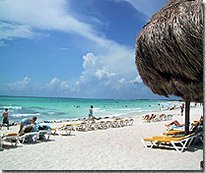Thousands of seabirds dying along the coast of B.C.
Published: Friday, February 24, 2006
Countless thousands of seabirds are mysteriously washing ashore dead along the B.C. coast this winter from the west coast of Vancouver Island to the Queen Charlotte Islands.
"It's spooky to see them coming in like that," Pete Clarkson, assistant chief warden at Pacific Rim National Park Reserve at Long Beach, said Thursday in an interview.
The massive die-off of seabirds this winter follows the near-complete failure of at least two seabird nesting colonies last spring.
About 1,000 glaucous-winged gulls failed to successfully breed at Cleland Island, a provincial ecological reserve northwest of Tofino, while about 400 glaucous-winged gulls and 300 rhinoceros auklets failed to breed at Seabird Rocks, south of Barkley Sound.
Curiously, up to 200 of the gulls successfully bred at Florencia Islet north of Barkley Sound, a colony that might have benefitted from its location just two kilometres from a local garbage dump.
"That's the only thing I can think of," Clarkson said. "It's a strong suspicion."
Thousands of seabirds were also reported washing ashore or breeding with poor success on the U.S. Pacific coast between California and Washington, including the mass starvation deaths of murres on Tatoosh Island off the Olympic Peninsula.
U.S. scientists speculate the deaths may be associated with warmer weather and changes in winds and currents that might have reduced the availability of the birds' marine food.
Clarkson said the first wave of seabirds, red phalaropes, began washing ashore in large numbers around last Christmas on the beaches of Pacific Rim park. The small shorebirds looked emaciated. "They appeared to be starving, minimal body fat," he said.
Northern fulmars, western grebes, common murres, and rhinoceros auklets were among the seabird species that washed ashore at the Carmanah light station.
Clarkson noted that a similar die-off of phalaropes occurred about three years ago. An examination of their gizzards found plastic pellets or nodules produced for manufacturing consumer products. These pellets find their way into the ocean only to be ingested by seabirds feeding on the surface.
While these plastics pose an environmental and ecological problem, they are not thought to have caused the death of the phalaropes, Clarkson said.
Then, after last Christmas and into January, large numbers of Cassin's auklets began washing ashore on the west coast of Vancouver Island. "I sense it's specific to a food source, or somehow a problem in that food web," Clarkson said.
Surveys found three to seven dead auklets per kilometre on beaches in the park.
On the east coast of the Queen Charlottes, officials also reported large numbers of ancient murrelets, marbled murrelets, and Cassin's auklets being found dead.
The total number of birds dead all along the coast would have ranged into the thousands, he said.
Various bird carcasses have been sent to the provincial lab in Abbotsford for analysis, while federal scientists with the Canadian Wildlife Service in Delta and Sidney gather information in an effort to find the cause of the massive die-off and consider the implications on overall populations.
http://www.canada.com/vancouversun/news/story.html?id=736d8450-eb25-4016-b411-b776f3a8537f&k=14758









































